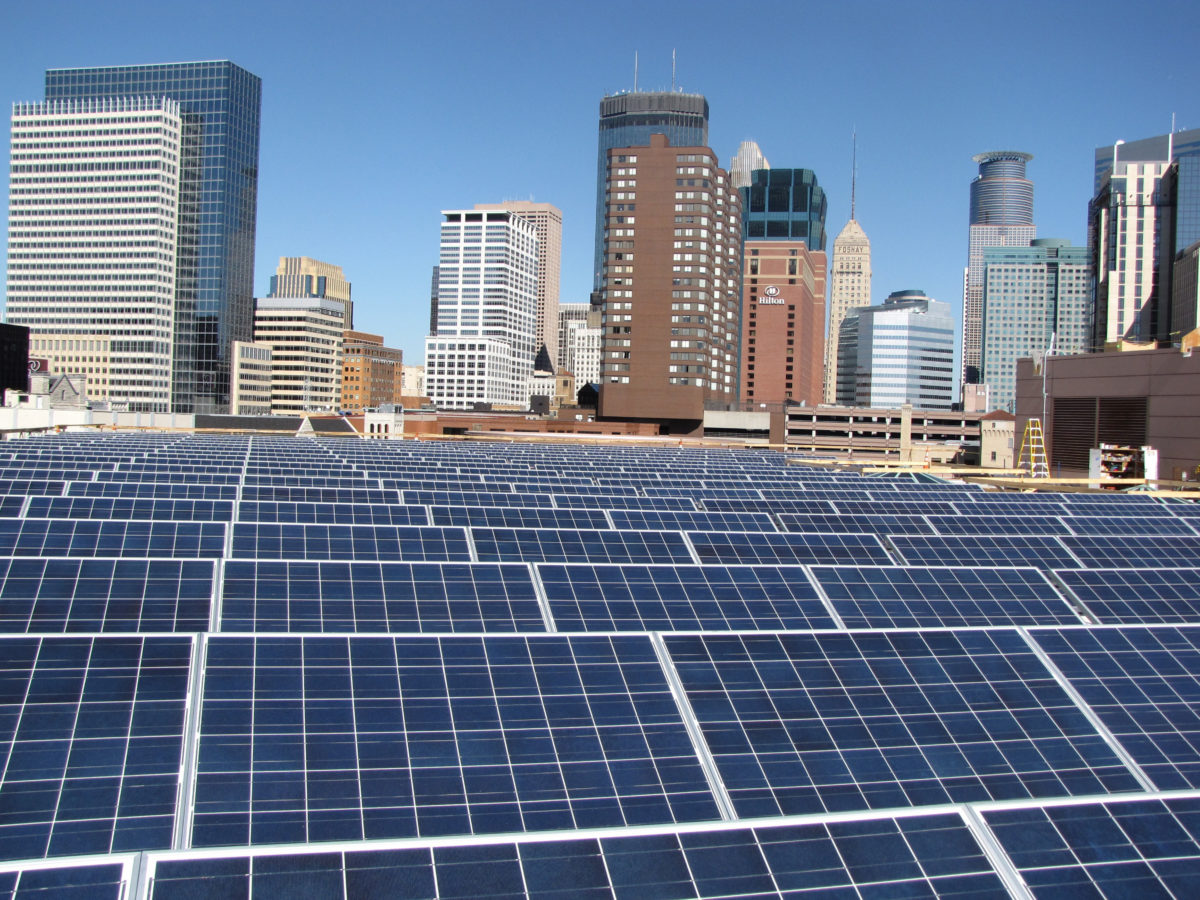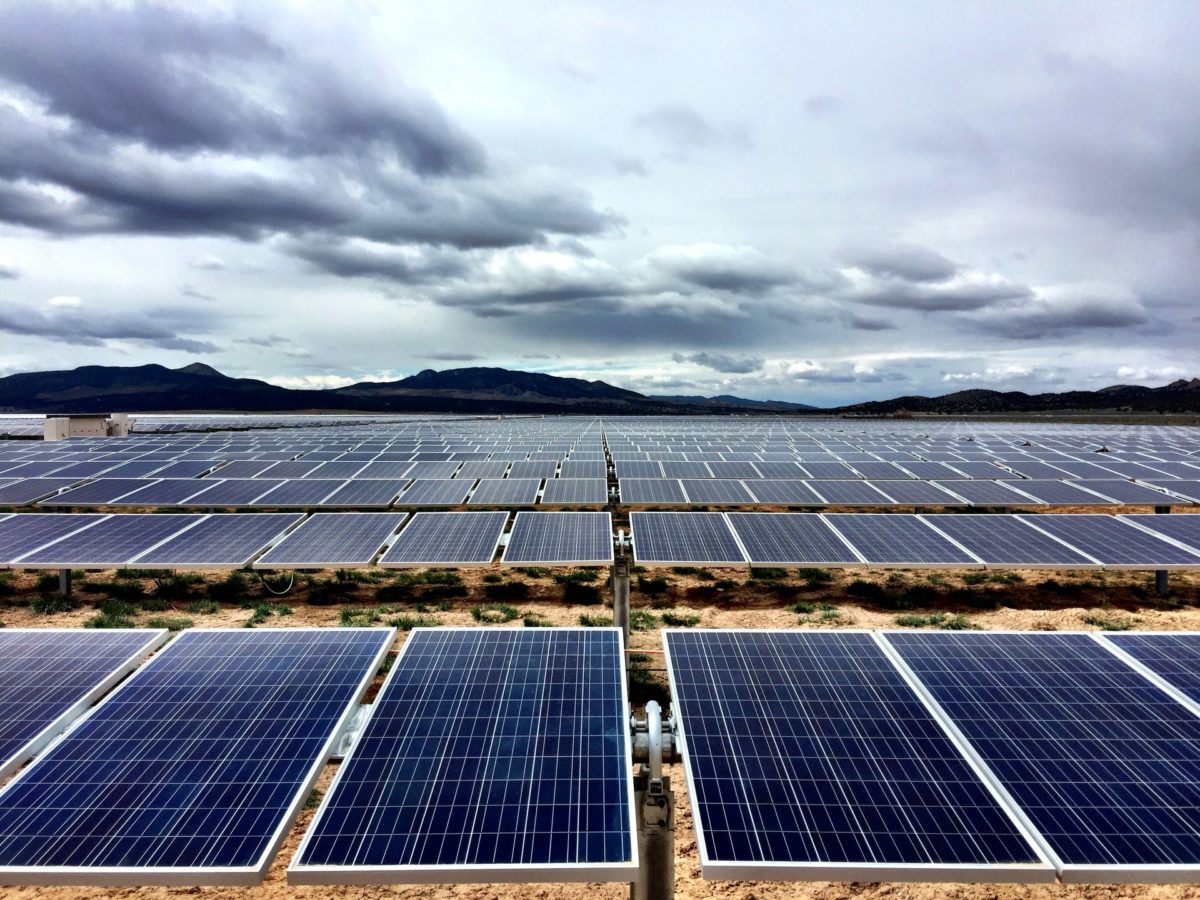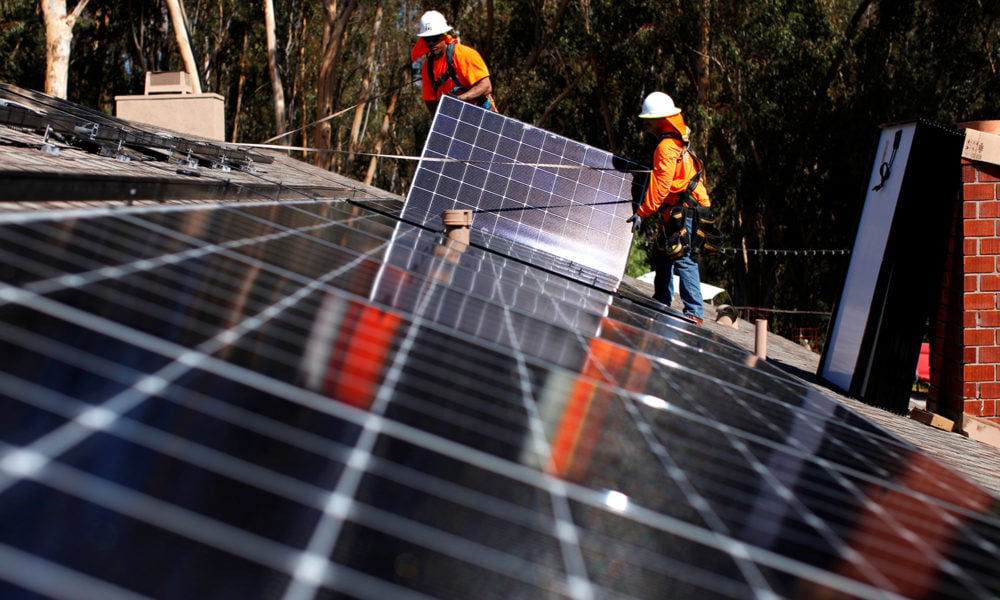Update: For additional resources on the lifecycle of solar panels, please see blog posts by Charlie Hoffs available here, here, and here.
This is one of four blogs in a series examining current challenges and opportunities for recycling of clean energy technologies. Please see the introductory post, as well as other entries on wind turbines and energy storage batteries. Special thanks to Jessica Garcia, UCS’s Summer 2020 Midwest Clean Energy Policy Fellow, for research support and co-authoring these posts.
Growth of solar panels and their lifespans
Solar energy is converted into electricity primarily with photovoltaic (PV) panels (there is another technology, called concentrating solar power, or CSP, but it is less commonly used and not addressed here). PV panels are comprised of individuals cells linked together, forming various shapes and sizes based on the needs of the system. The panels themselves are made with semiconductor materials—generally silicon, but sometimes various rare metals—and generally covered in glass.
The cost of PV panels has declined dramatically in recent years while their efficiency has gone up. These trends are continuing, leading to rapid growth of the solar industry globally. Solar panels on average last 25-30 years (and maybe even longer); thus, solar installations occurring today can be expected to remain productive until the middle of this century.
The reliability and longevity of new panels means that the volume requiring recycling or disposal is currently low, except for very early generations of PV panels and small numbers that may get broken during the installation process or damaged in storms.
However, options for recycling and disposal need to be addressed as PV production continues to ramp up. And while the larger recycling need may not come for another decade, infrastructure and policy should be put in place now to accommodate future needs.
Recycling vs. disposal of PV panels
As current PV installations reach the final decommissioning stage, efficient recycling and material recovery are preferable to disposing of panels in landfills. Solar panels are mostly glass and metal, both of which are easily recyclable materials. For glass, however, the demand for recycled material has decreased significantly in the US in recent years. This low recycling rate is due to the single-stream recycling widely used in the US (for household items, for example), which leads to more contamination than the multi-stream approach used elsewhere. The result is a greater processing need that produces less usable “cullet” (recycled glass for glassmaking).
PV glass has additional challenges due to the presence of other materials embedded within the PV glass. On the other hand, assuming materials such as copper, silver, and silicon can be recovered efficiently, recycling these PV panel components could offer some cost savings in a PV circular economy model.
Acknowledging PV panels as a waste stream is a start, but as California has discovered, passing legislation around their disposal is not sufficient when the regulations facilities must follow are unclear. When PV panels are designated as hazardous materials, it makes their handling and recycling cumbersome or costly for manufacturers or consumers. On the other hand, the benefit is that there is designated responsibility for their disposal on the part of manufacturers.

The International Energy Agency’s Photovoltaics Power Systems Programme recently released research on the safety of disposing of PV panels in landfills. The main pollutants of concern for each of the major PV modules to be crushed are lead for crystalline silicon panels, cadmium for cadmium telluride (CdTe) panels, and selenium for copper indium gallium selenide (CIGS) panels. While safe options for disposing of PVs in landfills are useful, efficiently recycling and reusing the materials is preferable.
There are some recycling options currently available for PV panels, but they differ widely on their efficiency depending on the panel type. The most prevalent type of panel—crystalline silicon—can be handled in municipal glass, metal, or electronic waste facilities. However, these facilities have limited capacity to extract all the materials and, due to the infrequency of supply of PV panels in need of recycling, little incentive to design or install custom processes.
Corporate responsibility for solar end-of-ese
Increasingly, private industry is taking up the charge to increase the recycling capacity for the solar industry. For example, the Solar Energy Industries Association (SEIA) has a national PV recycling program that seeks to lower the cost of recycling panels by aggregating services provided by selected vendors. Individual companies are also ramping up their recycling activities in the US and internationally.
Based out of Phoenix, Arizona, the company We Recycle Solar now has the ability to process up to 100,000 pounds of solar equipment per day in each of their ten facilities across the US, Japan, South Korea, and Belgium. The company’s current focus is on large-scale recycling best suited for sourcing from manufacturers, utilities, or installers, rather than individual customers. The added benefit is that the company recycles all related equipment, including batteries, which streamlines the disposal process and helps companies meet any end-of-life requirements from local or state authorities.
Additionally, Veolia, a French water and waste company, opened Europe’s first solar panel recycling plant in 2018. The plant’s supply is provided through a contract with the solar recycling organization PV Cycle France. Materials extracted from the recycled panels are used directly for new panels.
Going a step further is First Solar, a company which combines manufacturing, sales, and recycling of solar panels with about 90% of their glass and semiconductor materials able to be extracted and reused. However, First Solar takes a different financial approach to end-of-use for the panels they sell now. The company switched (as of 2013) from charging their solar customers upfront for future end-of-use recycling to having customers pay the price when the PVs are decommissioned.
Since solar PV recycling is not currently the most economic option, because currently the materials are relatively abundant and inexpensive, it can be boosted through government incentives or by adding it to a broader circular economy for clean energy technologies. For example, silicon, as a large component of most panels, is being assessed for its properties of increasing mileage in electric vehicles.
While it’s important for solar to be a growing, and accelerating, piece of our global energy mix, it’s also important to get ahead of solar recycling while the demand is low because the need will ramp up in the next decade as first-generation solar installations begin to age out. Putting policies in place on the front end with manufacturers as current production ramps up, to account for the entire life cycle including end-of-use, will allow us to get ahead of the curve.
Anticipating future solar PV recycling needs
Three potential ways for industry, governments, and other stakeholders to prepare for anticipated waste volumes of PV panels are: (1) adopting PV-specific waste regulations, (2) expanding waste management infrastructure, and (3) promoting ongoing innovation.

One model for policy in addressing solar and other complex electronic waste is the European Union’s (EU’s) Waste Electrical and Electronic Equipment (WEEE) Directive, which came into effect in 2014 and puts in place extended producer responsibility. Each country in the EU is responsible for further regulation of PV panels, but universally all producers within the EU will bear the take-back and recycling burden rather than customers. Although this end-of-use responsibility is carried by producers, having this blanket policy across the EU allows producers to better account for and charge consumers upfront. Down the line, as solar panels need replacing, this approach creates a source of funding and a system in place for recycling.
In the US states could emulate this model by encouraging the development of solar panel recycling options and requiring manufacturers to offer takeback and recycling programs to customers. Leading the charge, Washington State enacted the Photovoltaic Module Stewardship and Takeback Program (SB5939) in 2017 that requires manufacturers selling solar products to have end-of-use recycling programs or they will not be permitted to sell solar modules in the state after January 1, 2021. Further, in April 2020, Washington House Bill 2645 was signed into law. It expands the solar stewardship policies in the state to include utility-scale solar panels, which were previously exempted.
Solar manufacturing in the U.S. has decreased largely due to competition from international markets that have driven down prices, but solar installations have continued to increase. As a result, there is potential for jobs and economic growth in the creation of solar recycling infrastructure in the US.
Solar power is continuing to grow and legitimate questions about materials needed to manufacture them and how to manage end-of-use should not slow us down. Growth in the sector is expected to continue and the makeup of panels are expected to evolve with time. This means that technology and policy around solar PV recycling will need to keep up. The solar industry, policymakers, and clean energy advocates should work together to plan for a future where clean energy is produced as responsibly as possible.
Please see the other blogs in this series for an introduction to recycling clean energy technologies, as well as additional information on recycling wind turbines and energy storage batteries.

